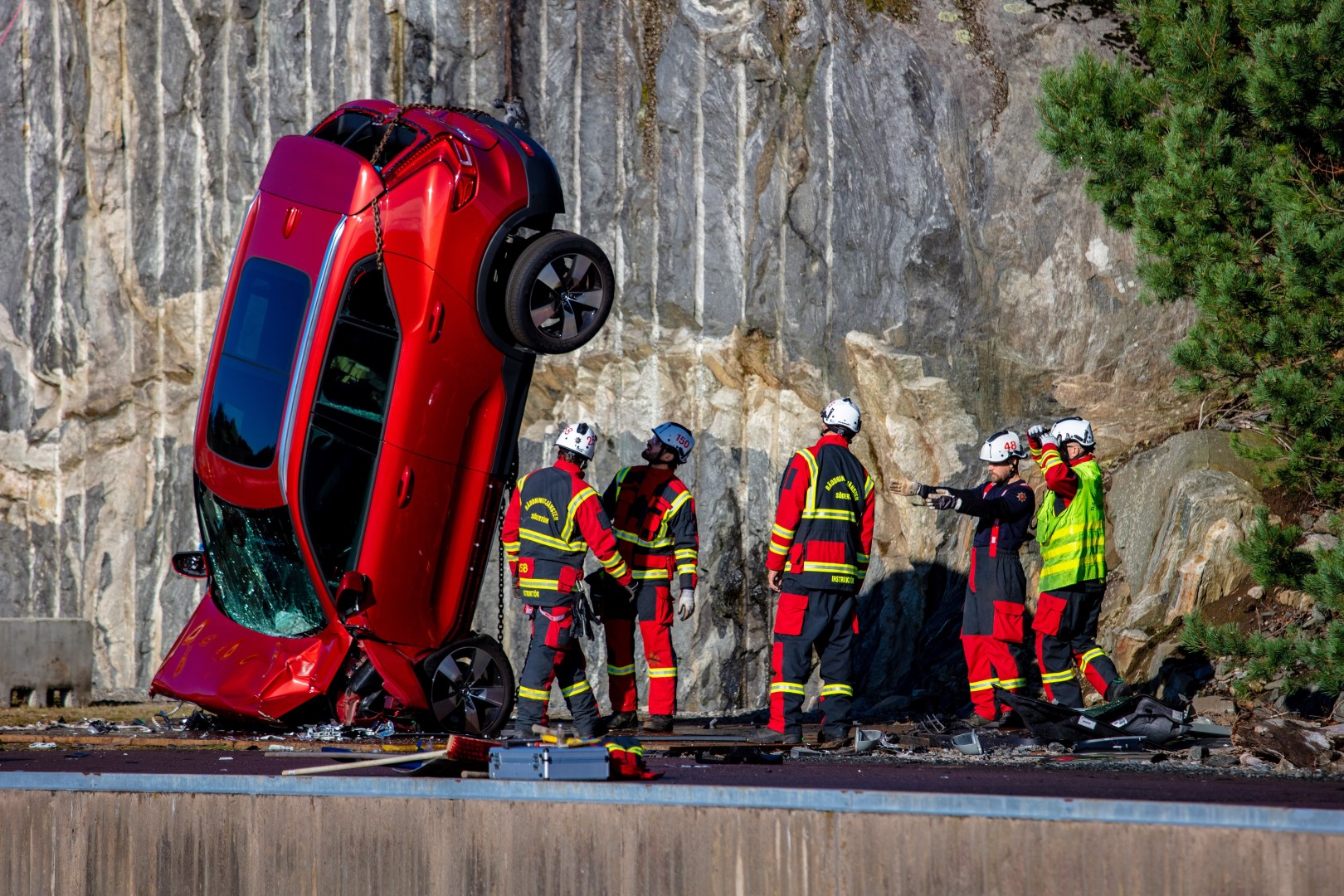When someone asks us to think of a safe car, the image we have in our minds is most probably a Volvo, thanks to all of the brand’s inventions and initiatives along the way, but that doesn’t mean that other cars are not safe.
However, the reason Volvo always stays ahead of the game when it comes to safety is because the company always goes the extra mile in order to keep things safe, like what it has done now with a crane and 10 of its new models.
In an effort to allow rescue services to prepare for any possible crash scenarios beyond what can be simulated with ordinary crash testing, Volvo dropped several new Volvos multiple times from a crane, from a height of 30 metres.
This approach helped create enough damage to adequately simulate the damage found in the most extreme crash scenarios (high speed accidents, severe side impact etc).
What happens in these situations is that people inside the car are likely to be in a critical condition. So, the priority is to get people out of the car and to a hospital as quickly as possible, using hydraulic rescue tools known in the industry as ‘jaws of life’.
In fact, extrication specialists often talk about the golden hour where they need to release and get a patient to the hospital within one hour after the accident has happened.

So, what Volvo did was basically present such scenarios to the rescue services so they could not only train, but also to work on further improvising extrication work in the future.
It was said that all findings from the training here and the resulting extrication work will be collected in an extensive research report, which will be made available free of use to rescue workers elsewhere, allowing them to benefit from the findings and further develop their life-saving capabilities.
A total of ten Volvos, of different models, were dropped from the crane several times. Before the drop, Volvo Cars safety engineers made exact calculations about how much pressure and force each car needed to be exposed to, in order to reach the desired level of damage.
“We have been working closely together with the Swedish rescue services for many years,” says Hakan Gustafson, a senior investigator with the Volvo Cars Traffic Accident Research Team.
“Normally we only crash cars in the laboratory, but this was the first time we dropped them from a crane,” says Håkan Gustafson. “We knew we would see extreme deformations after the test, and we did this to give the rescue team a real challenge to work with.”


